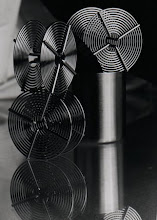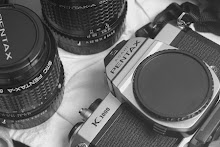We will cover a simplified explanation of the theories and decisions first. Then we will move on to cover it in detail, with working examples. The Zone System has a reputation for being confusing, but it actually represents a simple set of decisions made by image makers every day. I think you will see, after reading over what Adams wrote, and going over this summary here, that the main point of the Zone System was to add and subtract light from an image in a controlled and sensible fashion.
Because so many decisions in photography are relative, I have fallen into the habit of answering questions in the more complicated relative chains of problems solving with the terms “ADD LIGHT” and “SUBTRACT LIGHT.” They are written here in all capitals because I have a tendency to do so in my personal notes. Summing it up and drawing attention to the basic concepts of “ADD LIGHT” and “SUBTRACT LIGHT” have helped me clarify situations. I hope they will help you, too.
We look at the scene we want to photograph. We compose it in the viewfinder to our satisfaction. Now we are getting ready to make an exposure. When we make that exposure, we are going to let light into the camera. How much light should we let in?
Look at the scene in the viewfinder. What is the subject? Look at the surrounding image in the viewfinder. What is the lightest light? What is the darkest dark? How light or dark is our subject? Is it as light or dark as we would want?
In the real world, photographing in available light, we often cannot control how much light strikes the subject. But, we can control how much light gets into the camera. When we meter the light, we are measuring how much light is reflected from the target we are metering. The meter will consider our film speed (ASA/ISO), our aperture (f/stop) and our shutter speed.
We can manipulate how much light gets into the camera in several ways. We can vary our film speed, by loading different kinds into the camera. We can open or close the aperture on the camera. If we do this, we will affect depth of field, the amount of area before and after our focal point that will come into focus. We can open and close the shutter faster or slower. If we open it faster, we may freeze action. If we open it slower, we may blur action. We can manipulate the amount of light entering the camera in these ways individually, or in combination.
But, no matter what we do, we want to ADD LIGHT or SUBTRACT LIGHT from the image in a controlled fashion. All of our decisions for choosing film speeds, shutter speeds and apertures rest on what we think we would like the image to look like when we are done.
If we get to the scene, and we feel it is okay for the subject to be represented in middle gray, ZONE V, then we can go ahead and use the light meter’s recommendation for exposure.
If we get to the scene and decide that we want to record details in the shadow area, or make our subject appear lighter in some way, then we must ADD LIGHT.
If we get to the scene and decide that we want to expose for the highlights, so that the lighter lights show their details, then we must SUBTRACT LIGHT.
Whether we use the average, middle grey, ADD LIGHT or SUBTRACT LIGHT from the image, we do so because we chose that for our final image.
The rate at which we add or subtract light is not a steady, bulk increase.
Light is added or subtracted according to logarithms; these exponential concepts help us to understand precise measurements of light. Understanding Beer’s Law and the Inverse Square Law of Light can help us a lot in understanding how and why different kinds of rates are used in calculating how much light we add or subtract with the camera controls.
Yet, some is very simple. Every time we open up the aperture by one f/stop, we double the amount of light that would strike the film.
Chapter Two of Adams’ book notes:
ASA exposure proportions: 64 80 100 125 160 200 250 320 400 500
Each change in shutter speed increment = 1 stop.
So, to drop two stops (open, add light) you would go from 64 to 200.
Chapter Three of Adams’ book notes that:
Stops are logarithmic. Increases of one stop equal doubling the exposure.
Stops IncreasedExposure FactorEffect
- One 2 = (2^1)Doubled Exposure
- Two 4 = (2^2)Quadrupled Exposure
- Three8 = (2^3)Octopled Exposure
Understanding and accepting these ideas, how are we to know where to begin? Adams suggested that we begin with our film speed. The film speed we load into the camera is a good starting point because it is the least practical element to change on site. We know that there is a relationship between film speed and apertures. We accept that:
- The square root of the film speed leads us to the key f/stop.
- The film speed has a number.
- Take the square root of that.
- Pick an aperture that is as close to that number as possible.
- Take your meter readings from that aperture.
- Make your editing based on the meter readings from the key stop.
Using a key stop based on film speed helps us because there are hundreds, if not thousands of acceptable film speed, aperture and shutter speed combinations. So, to simplify things, we begin our meter readings from the key stop, determined by the square root of our film speed. Our meter reading from the key stop will tell us what shutter speed to use if we want our subject to be rendered in middle gray (Zone V).
If we want that subject to appear lighter, we must ADD LIGHT. If we want that subject to appear darker, we must SUBTRACT LIGHT. We can ADD LIGHT or SUBTRACT LIGHT by:
- Making the aperture wider to ADD LIGHT
- Making the aperture narrower to SUBTRACT LIGHT
- Making the shutter stay open longer to ADD LIGHT
- Making the shutter close faster to SUBTRACT LIGHT
relative to the way the equipment would have worked if we had followed the recommendations for rendering the subject in Zone V middle gray.
# # #







No comments:
Post a Comment